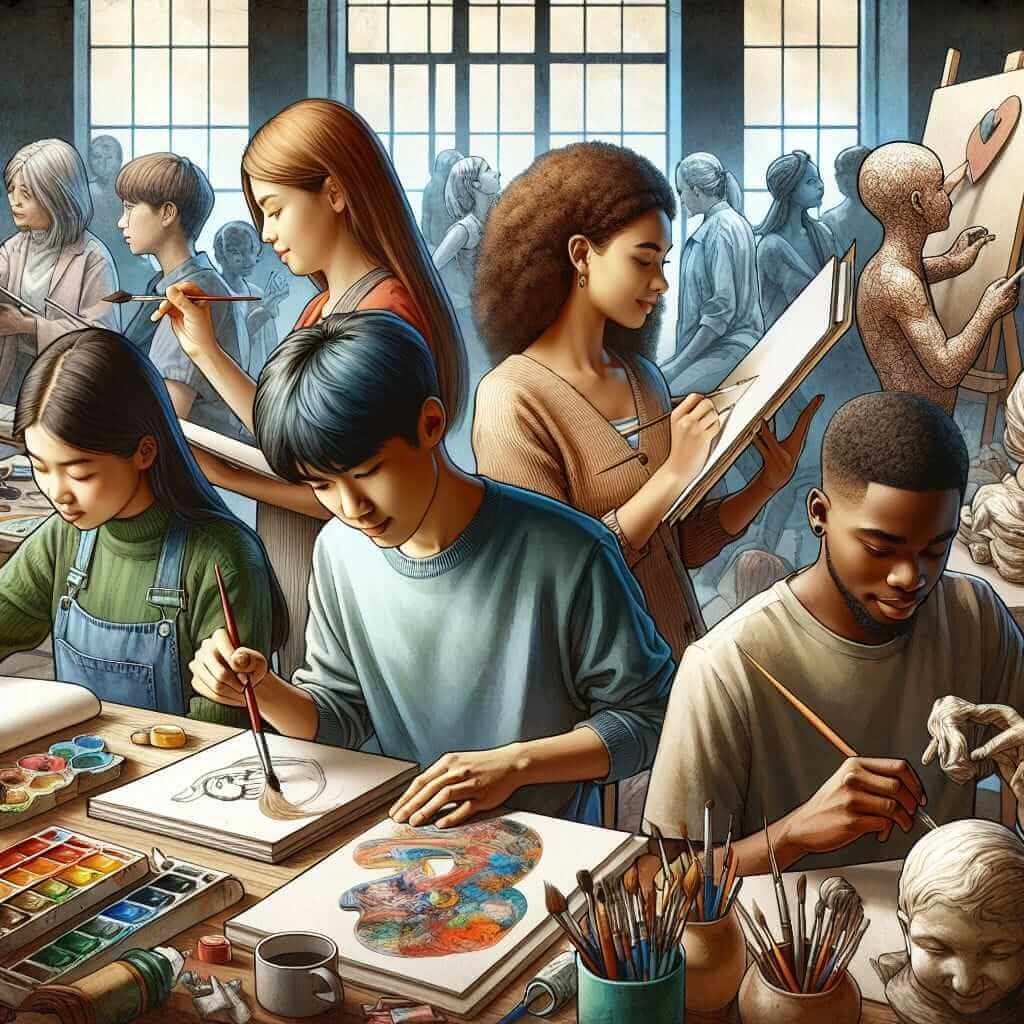Arts education has been a recurrent topic in the IELTS Writing Task 2 exams. Students are often required to discuss the significance, benefits, and drawbacks of including arts in the educational curriculum. Recognizing the importance of this topic, we will delve into the keyword “The importance of arts education in developing creativity,” along with its associated terms like “creativity development,” “arts programs in schools,” “student creativity,” and “benefits of arts education.”
Introduction: The Significance of Arts Education in the IELTS Context
In recent years, IELTS examiners have frequently introduced topics that revolve around the inclusion of arts in education. The premise is that arts education plays a crucial role in fostering creativity among students—a vital skill in today’s rapidly evolving world.
Potential Essay Prompt Examples
- To what extent do you agree or disagree: Arts education is essential for developing creativity in students.
- Discuss the advantages and disadvantages of including arts programs in the school curriculum.
- Some people believe that arts education enhances students’ creativity, while others think it is a waste of time. Discuss both views and give your opinion.
Sample Essay Prompt
Let’s consider the first prompt for our detailed analysis and essay example:
Prompt: To what extent do you agree or disagree: Arts education is essential for developing creativity in students.
Analysing the Prompt
This prompt requires you to express and justify your opinion on the statement that arts education is vital for nurturing creativity in students. You should:
- Clearly state your viewpoint in the introduction.
- Provide supporting arguments and examples in the body paragraphs.
- Address counterarguments or alternative views.
- Summarize your position in the conclusion.
Sample Essay
Introduction
In today’s ever-changing world, creativity is increasingly seen as a crucial skill. In this context, arts education has been championed as an essential element in nurturing creative capacities in students. I firmly believe that arts education plays an invaluable role in stimulating creativity, as it provides unique opportunities for self-expression, problem-solving, and critical thinking.
Body Paragraph 1: The Role of Self-Expression
Firstly, arts education allows students to explore and express their emotions and thoughts in a manner that other subjects do not offer. For instance, through painting, music, or drama, students can convey complex ideas and emotions. This form of self-expression is pivotal in developing their creative minds. It encourages students to think beyond conventional frameworks and fosters a unique way of seeing the world.
Body Paragraph 2: Enhancing Problem-Solving Skills
Secondly, engaging in arts necessitates innovative problem-solving skills. For example, when students undertake a creative project, they often confront challenges that require out-of-the-box thinking to resolve. This exercise not only enhances their creative abilities but also prepares them for real-world problem-solving. Research has indicated that students involved in arts are more adept at navigating ambiguous situations and generating unique solutions.
Body Paragraph 3: Fostering Critical Thinking
Moreover, arts education promotes critical thinking. Analyzing artwork, whether it be a piece of literature, a painting, or a musical composition, requires evaluation and interpretation skills. Engaging with such activities enables students to think critically about various perspectives and contexts. This skill is indispensable not only in creative fields but also in everyday decision-making processes.
Counterargument and Refutation
Some critics argue that arts education is less important than science and technology education due to the increasing demand for STEM skills. However, this viewpoint overlooks the integrative potential of arts education. Creativity is not confined to artistic pursuits; it is a key component in scientific innovation and technological advancement. A well-rounded education that includes the arts ensures that students are equipped with the creative skills necessary for success in any field.
Conclusion
In conclusion, arts education is fundamental in developing creativity among students. It enhances self-expression, cultivates problem-solving skills, and fosters critical thinking, thereby preparing students for diverse future roles. Given the multifaceted benefits of incorporating arts into the educational curriculum, I strongly advocate for its continuation and expansion in schools.
(Word count: 362)
Key Considerations When Writing About This Topic
- Vocabulary: Utilize terms such as “self-expression,” “problem-solving,” “critical thinking,” “innovative,” and “multifaceted.”
- Grammar: Employ complex sentences to articulate nuanced arguments. Use connectors like “for instance,” “moreover,” and “however” to enhance coherence and cohesion.
- Evidence: Incorporate examples and research findings to support your assertions.
Difficult Vocabulary In The Essay
- Self-expression (noun) /ˌself.ɪkˈspreʃ.ən/ – The expression of one’s feelings, thoughts, or ideas.
- Critical thinking (noun) /ˈkrɪt.ɪ.kəl ˈθɪŋ.kɪŋ/ – The objective analysis and evaluation of an issue to form a judgment.
- Multifaceted (adjective) /ˌmʌl.tɪˈfæs.ɪ.tɪd/ – Having many aspects or sides.
- Out-of-the-box thinking (phrase) – Thinking differently, unconventionally, or from a new perspective.
- Nuanced (adjective) /ˈnjuː.ɑːnst/ – Characterized by subtle differences or distinctions.
Conclusion
In summary, arts education is paramount in fostering creativity, providing numerous cognitive and emotional benefits for students. As such, educators and policymakers should prioritize its inclusion in educational curricula. For further practice, consider these related topics:
- Should government subsidies be given to arts programs in schools?
- Compare the importance of arts education with science education.
- How can arts education positively impact students’ academic performance and social skills?
By engaging with these prompts, students can enhance their ability to articulate and support their views on this relevant and fascinating topic.

By incorporating the best practices mentioned above, students can effectively tackle any IELTS Writing Task 2 focused on the importance of arts education in fostering creativity.